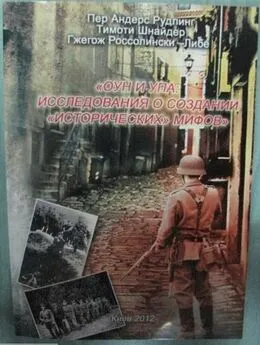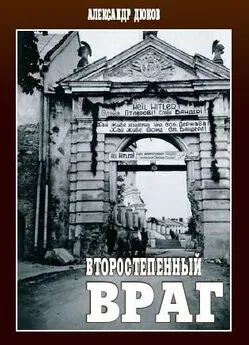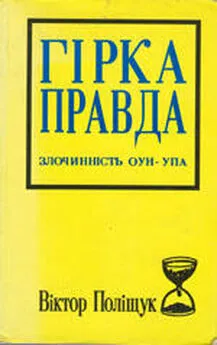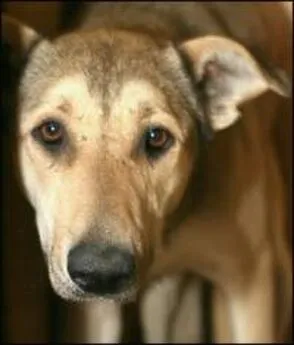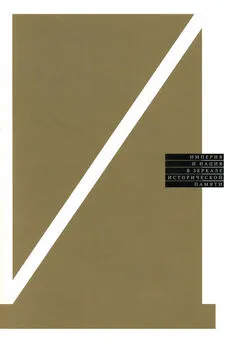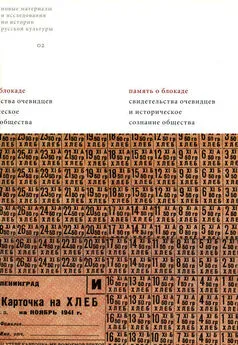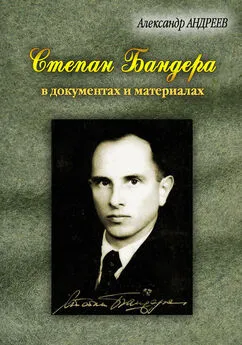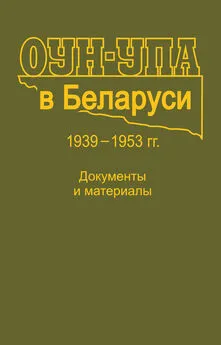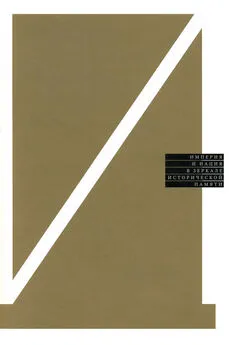Пер Рудлинг - ОУН и УПА: исследования о создании исторических мифов. Сборник статей
- Название:ОУН и УПА: исследования о создании исторических мифов. Сборник статей
- Автор:
- Жанр:
- Издательство:Золотые ворота
- Год:2012
- Город:Киев
- ISBN:978-966-2246-16-2
- Рейтинг:
- Избранное:Добавить в избранное
-
Отзывы:
-
Ваша оценка:
Пер Рудлинг - ОУН и УПА: исследования о создании исторических мифов. Сборник статей краткое содержание
Сборник статей «ОУН и УПА: исследования о создании «исторических» мифов» является вторым изданием в серии «Историческая правда», основанной Международным антифашистским фронтом в 2011 году.
В издании представлены исследования современных западных ученых — Пера Андерса Рудлинга, Тимоти Д. Шнайдера, Гжегожа Россолинского-Либе на тему украинского радикального национализма, фашизма, создания антиисторических мифов вокруг ОУН-УПА, преступлений против человечности, попыток героизации и реабилитации этих организаций и их членов.
Большинство исследований в Украине публикуются впервые.
ОУН и УПА: исследования о создании исторических мифов. Сборник статей - читать онлайн бесплатно полную версию (весь текст целиком)
Интервал:
Закладка:
277
Swedish historian Göran B. Nilsson describes the Soviet practice of writing history from the perspective of a constantly changing present as “chronological imperialism.” Göran B. Nilsson, “Historia som humaniora,” Historisk Tidsskrift no. 1 (1989): 1, 4.
278
To commemorate the centennial of the birth of the OUN poet Olena Teliha, President Yushchenko in 2006 issued a presidential decree to erect a memorial “to her and her associates” in Babin Yar, where her body had been buried in 1942. Aleksandr Burakovs’kyi, “Istoriia memoralizatsii evreiskoi tragedii v Bab’em Iaru za god ee 70-letiia: pozor Ukrainy,” My Zdes’, no. 278: http://www.newswe.com/index.php?go=Pages&in=view&id=2725 (accessed October 3, 2010), citing Yushchenko decree No. 416/2006. In Drohobych, a monument to Bandera has been erected at the site of the former ghetto. Omer Bartov, Erased: Vanishing Traces of Jewish Galicia in Present-Day Ukraine (Princeton, Conn.:Princeton University Press, 2007), 52–53.
279
Jilge, “Zmanannia zhertv,” 14.
280
V’’iatrovych, Stavlennia OUN do ievreiv.
281
There is no shortage of such memoirs. See for example Shimon Redlich, Together and Apart in Brzezany: Poles, Jews and Ukrainians, 1919–1945 (Bloomington: Indiana University Press, 2002), 103–104; Reuben Ainsztein, Jewish Resistance in Nazi-Occupied Eastern Europe: With a Historical Survey of the Jew as Fighter and Soldier in the Diaspora (London: Paul Elek, 1974), 252–256. On the OUN’s and the UPA’s attitude to Jews during the war, see Weiner, Making Sense of War, 239–297.
282
A Wehrmacht intelligence report from April 1944 reports that “the UPA has successfully taken up pursuit of the Jewish gangsters and up to now shot almost 100.” Staatsanwaltschaft Dortmund 45 Js 24/62, Bd “Reste von Gutachten und Dokumenten aus dem Bestand des Pz. AOK 4,” BA-MA, RH-21, Pz. AOK 4, Abt. Ic/AO, Tätigkeitsbericht, April 1944, as cited in Golczewski, “Shades of Grey,” 143. On this topic, see Weiner, Making Sense of War, 263–264.
283
Pres-tsentr Sluzhba bezpeki Ukrainy, “U Sluzhby bezpeky Ukrainy vidbulys’ Hromads’ki istorychni slukhannia “Evrei v Ukrains’komu Vyzvol’nomu ruzi,” April14,2008,http://www.sbu.gov.ua/sbu/control/uk/publish/article?art_id=77689&cat_id=39574 (accessed April 14, 2008).
284
Iryna Ehorova, “Volodymy V’’iatrovych: Holovnym sub’ektom istorychnoho protsesu v Ukra)ni XX stolittia bula ne URSR, a ukra)ns’kyi vyzvol’nyi rukh,” Den’, February 18, 2008: http://www.ukrnationalism.org.ua/interview/?n=69 (accessed March 16, 2008).
285
John-Paul Himka, “True and False Lessons from the Nachtigall Episode,” Brama, March 19,2008: http://brama.com/news/press/2008/03/080319himka_nachtigall.html (accessed March 19, 2008). See also Kurylo and Himka [Khymka], “Iak OUN stavylasia do ievreiv?” 252–265.
286
V’’iatrovych, Stavlennia OUN, 78–81. At the April 2008 conference at the SBU, V’’iatrovych repeated his argument on the SBU website, adding an additional example of a Jew in the UPA, Leiba-Itsko Dobravs’kyi. “U Sluzhby bezpeki Ukrainy.”
287
V’’iatrovych, Stavlennia OUN, 74, citing R. Petrenko, “Za Ukrainu, za ii voliu. Spohady,” Litopys Ukrains’koi Povstans’koi Armii, 27 (Toronto and Lviv: Litopys UPA, 1997), 173.
288
Himka, Ukrainians, Jews, and the Holocaust, 47.
289
As of January 2011, the documents were still available on the website of the Ukrainian Embassy in Canada, “Novini,” Posol’stvo Ukrainy v Kanadi, February 6, 2008: http://www.ukremb.ca/canada/ua/news/detail/11684.htm (accessed January 18, 2011).
290
Iaryna Iasynevych, “V’’iatrovych: ‘Kampania proty Shukhevycha ne maie istorychnoi osnovy,’”Narodna Pravda, March 4, 2008: http://narodna.pravda.com.ua/history/47cd371e88b05/ (accessed March 16, 2008).
291
Volodymyr V’’iatrovych, “Iak tvorylasia lehenda pro Nakhtihal’,” Dzerkalo Tyzhnia, no. 6 (685) 16–22 February 2008: http://www.dt.ua/3000/3150/62036/ (accessed March 16, 2008)
292
Mishchenko, “Pratsivnyk SBU.”
293
SBU, “U Sluzhbi bezpeky Ukrainy vidbulys’ Hromads’ki istorychni slukhannia ‘Evrei v Ukrains’komu vyzvol’nomu rusi,’ April 14, 2008: http://www.sbu.gov.ua/sbu/control/uk/publish/article?art_id=77689&cat_id=39574 (accessed April 14, 2008).
294
Wilfried Jilge, “Nationalukrainischer Befreiungskampf: Die Umwertung des Zweiten Weltkrieges in der Ukraine,” Osteuropa 58, (2008): 179.
295
SBU, “U Sluzhbi bepeki Ukrany vidkrylas’ fotovystavka “Ukrains’ka Povstans’ka Armiia. Istoria neskorennykh,” May 27, 2008: http://www.sbu.gov.ua/sbu/control/uk/publish/article?art_id=78839&cat_id=78711 (accessed August 21, 2008).
296
V’’iatrovych, Stavlennia OUN, 96, citing HDA SBU, f. 13, spr. 376, tom 65, ark. 283–295; SBU, “Evrei v Ukrains’komu vyzvol’nomu rusi.”
297
SBU, “Sluzhba bezpeki Ukrainy vidkryvae dlia shyrokoho zahalu arkhivni materially shchodo osib, prychetnykh do orhanizatsii ta zdiisnennia politiki Holodomoru-Henotsydurepresii” http://www.sbu.gov.ua/sbu/control/uk/publish/article?art_id=80420&cat_id=395 (accessed August 7, 2008).
298
SBU, “U Sluzhbi bezpeki Ukrainy vidkrylas’ fotovystavka ’Ukrains’ka Povstans’ka Armiia.’” Iurii Shukhevych (b. 1933) is the son of UPA commander Roman Shukhevych and leader of the far-right UNA-UNSO, the Ukrainian sister party of the German neo-Nazi NPD. It is openly antidemocratic — in the 1990s its propaganda posters carried the slogan “Vote for us and you will never have to vote again.” Along with Levko Luk’’ianenko (b. 1928), Shukhevych was one of the more prominent nationalist dissidents and a cause celebre for the émigré OUN. Following independence, Luk’’ianenko became Ukraine’s leading anti-Semite. Yushchenko designated both Iuryi Shukhevych and Luk’’ianenko Heroes of Ukraine. Per A. Rudling, ”Anti-Semitism and the Extreme Right in Contemporary Ukraine,” in Andrea Mammone, Emmanuel Godin, and Brian Jenkins, eds., Mapping the Extreme Right in Contemporary Europe: From Local to Transnational (forthcoming); John-Paul Himka, “The Importance of the Situational Element in East Central European Fascism,” East Central Europe 37 (2010): 357.
299
“Fishbein: ne dopustit’ Ukrainu v NATO — spetsoperatsiia Kremlia,” DELFI, July 12, 2009: http://www.delfi.ua/news/daily/foreign/fishbejn-ne-dopustit-ukrainu-v-nato-specoperaciyakremlya.d?id=467241 (accessed September 7, 2009); Svitlana Makovyts’ka, “Maestro bozhystoi movy: Ukrains’kyi poet Moisei Fishbein — pro politychnyi dal’tonizm, heniiv slova i heroiv Ukrainy,” Ukraina moloda, November 28, 2007: http://www.umoloda.kiev.ua/number/1051/171/37785/(accessed December 5, 2007). Fishbein repeats, almost verbatim, the same statements in subsequent interviews. Ol’ha Betko, “Poet M. Fishbein: dlia mene UPA — tse sviate,” BBC Ukrainian Service, October 14, 2008.
300
For Fishbein’s complete speech, see Moses Fishbein, “The Jewish Card in Russian Special Operations Against Ukraine: Paper delivered at the 26th Conference on Ukrainian Subjects at the University of Illinois at Urbana-Champaign, 24–27, June 2009: http://www.vaadua.org/VaadENG/News%20eng-2009/fishbeyn2.htm (accessed November 8, 2009).
301
Fishbein, “The Jewish Card”; “Russia uses ‘Jewish card’ to destabilize Ukraine, Fishbein says,” Ukrainian News, 25 June — July 8, 2009, 6; and Marko Levytsky, “UPA detractors fan the fl ames of ethnic discord,” Ukrainian News, February 18–March 3, 2010, 6.
302
Moses Fishbein, “The Jewish ard in Russian Operations against Ukraine,” Kyiv Post, June 30, 2009: http://www.kyivpost.com/opinion/44324 (accessed September 7, 2009).
303
Paul Goble, “Window on Eurasia: Moscow Special Services Again Play the ‘Jewish Card’ against Ukraine, Kyiv writer Says,” Window on Eurasia, July 9, 2009: http://windowoneurasia.blogspot.com/2009/07/window-on-moscow-special.html (accessed September 5, 2009). Goble presents himself as “a longtime specialist on ethnic and religious questions in Eurasia,” and worked, among other things, for the U.S. State Department, the CIA, and RFE/RL until 2004, when he made a career as vice dean and director of research at several universities in the former Soviet Union.
304
Krentsbakh, “Zhivu schche zavdiaky UPA”; “Spohady Stelly Krentsbakh—‘Zhyvu shche zavdlaiky UPA.’ Memoirs of Stella Krenzbach—‘I Am Alive Thanks to the UPA,’” October 25, 2009, on Moisei Fishbein’s blog: http://mosesfishbein.blogspot.com/2009/10/memoirs-of-stella-krenzbachi-am-alive.html (accessed October 25, 2009).
305
“Ievreika Stella Krentsbakh rozpovila, shcho vyzhyla zavdiaky UPA,” Press-tsentr TsDVR, December 9, 2009: http://upa.in.ua/book/?p=929 (accessed December 15, 2010).
306
Levytsky, “UPA detractors fan the fl ames of ethnic discord,” 6: Marco Levytsky, “Open letter villifi es freedom fi ghters, minimizes Holodomor,” Kyiv Post, May 6, 2011 http://www.kyivpost.com/news/opinion/op_ed/detail/103827/print/ (Accessed May 10, 2011) Riabchuk also repeats the V’’iatrovych/Fishbein line that “quite a few Jews were rescued by nationalists, and some of them even joined UPA to fi ght both Nazis and Soviets.” “Bandera’s Controversy and Ukraine’s Future.”
307
Victor Rud, “RE: John Pancake’s UPA Article of January 6, 2010,” Open letter to the Washington Post on behalf of the Ukrainian American Bar Association, January 22, 2010, citing Fishbein, “The Jewish Card in Russian Special Operations Against Ukraine.”
308
Moses Fishbein, “Listivka UPA ‘Evrei — hromadiany Ukrainy.’ 1950 rik,” December 7, 2009: http://mosesfishbein.blogspot.com/2009/12/1950.html (accessed December 7, 2009).
309
Kurylo and Himka, “Iak OUN stavylasia do ievreiv?”
310
This is based upon V’’iatrovych’s most positive estimate, which includes the four named Jews, the Stella Krentsbakh/Kreutzbach forgery and her claim that she worked with twelve Jews in her sanitary unit: twenty-fi ve Jews divided by the low est estimate of about 25,000 UPA insurgents in 1943. V’’iatrovych, Stavlennia OUN, 74–82. In order to provide a perspective here, this handful of Jewish physicians in the UPA should be put in relation to estimates that between 25,000 and 40,000 people served in the UPA in 1943–1944 and that perhaps as many as 300,000 people came through the ranks of the OUN-UPA. Marples, Heroes and Villains, 131–132, 169. The estimates of the number of people organized in the OUN and UPA varies. Stanislav Kul’chyts’kyi estimates that 400,000 people were organized by the OUN-UPA between 1929 and the middle of the 1950s, or 10 percent of the Western Ukrainian population. Stanislav Kul’chyts’kyi, “Polska problematyka w ukrai#skich badaniach historii OUN-UPA,” in Antypolska akcja OUN-UPA, 1943–1944: Fakty i interpretacje (Warsaw, 2003), 137, cited in Bruder, “Den ukrainischen Staat,” 279. German estimates from the end of 1943 put UPA membership at 40,000. Nationalist sources claim 100,000 members, but well-substantiated estimates provide numbers between 30,000 and 40,000 soldiers. John Armstrong, Ukrainian Nationalism, 3d ed. (Englewood, Colo.: Ukrainian Academic Press, 1990), 115.
Читать дальшеИнтервал:
Закладка:
